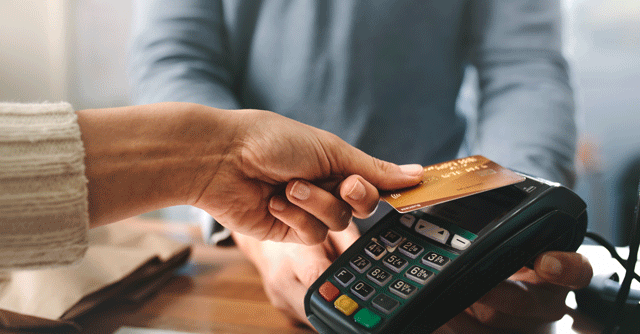
Contactless payment solutions continue pandemic-driven surge


New Delhi: The pandemic-led increase in face-to-face contactless payments looks here to stay, even as concerns over touching surfaces has decreased. The share of contactless transactions in India grew by more than six times from 2.5% in December 2018, to 16% in December 2021, according to a whitepaper published by payments major Visa, published on June 16.
“One in every six face-to-face transactions is contactless in India,” said Ramakrishnan Gopalan, vice president and head of Products & Solutions - India and South Asia, Visa.
But Visa isn’t the only one recording such a growth. Moreover, contactless payments include much more than debit and credit cards designed to remove contact from offline payments.

According to Pine Labs, the number of overall contactless transactions in India grew 171.9% year-on-year (YoY) and by 200.4% in INR adjusted between May 2021 and May 2022. QR Scan and Pay via Dynamic QR has seen the highest growth of 245% by INR adjusted and 231% in terms of the number of transactions.
Payments company Fiserv, too, has seen a 300% growth in UPI payments and 90% growth in contactless card payments over the last 12 months in India. Rishi Chhabra, country head and general manager, India and Sri Lanka, Fiserv said, "the wide scale adoption by consumers has major banks expanding their contactless product portfolio through virtual and contactless cards.”
Contactless payments include all forms of cashless transactions that do not require users to swipe cards and enter the 4-digit pin at point-of-sale (POS) terminals. These transactions can be made using NFC-enabled cards, NFC enabled mobile wallets, such as Samsung Pay. Even payments made by scanning QR code scan qualify as contactless payments.

Gopalan attributes the growth in contactless payments to the Finance Ministry’s guidelines to issue more credit and debit cards that support it and RBI’s decision to increase the limit for such transactions. RBI had increased the limit to Rs 5,000 in January 2021 from Rs 2,000.
Most industry experts also agree on this. “The widespread availability of contactless POS and raising of the limit has driven a significant growth in contactless payments,” said Ashutosh Sharma, vice-president and research director at Forrester Research.
Sharma said, the biggest driver is ease and the biggest stumbling block is people's fear of security of payment. “In any case, pandemic or not, this growth will continue to remain,” he added.

The Visa report further shows that contactless card payments received the most traction in quick-service restaurants, food and grocery, movie halls, and pharmacies. Bengaluru, Delhi NCR, Hyderabad, Mumbai, and Chennai saw the highest number of contactless transactions.
“This has seen more traction in stores and fuel stations where there are queues and longer payment time means people have to wait longer in the queues,” said Gopalan.
Even though these payments don’t require users to enter a pin, Gopalan vouches for their security. He explains that contactless cards use microprocessor chips and encryption to secure 2-way communication. This makes cloning the card impossible.

For banks and companies like Visa, contactless payments also help in building a loyal customer base. “The key benefit of contactless is that it builds stickiness. We have data from India and other markets that shows that contactless drives repetitive behavior and leads to loyalty for banks and companies like us,” added Gopalan.
Gopalan said that increasing the ceiling can also drive adoption. “As a network, we feel there is still a lot of room to grow within the Rs 5,000 limit while we work with RBI to increase the limit,” he added.
Sharma believes the biggest threat to the credit card as an instrument is coming from rising UPI adoption and making payments through UPI on credit.

“It is also an opportunity as well - the easiest way to make this payment will be to have UPI-linked credit cards. This will combine the ease of UPI with the value that the credit cards ecosystem offers,” said Sharma
Sharma noted this will mean making a different type of contactless payment, through a QR code scan.
Though contactless payment is growing in India, there is still a long way to go. In markets such as Singapore and Australia, contactless payments account for 70-80% of transactions, according to Gopalan.

